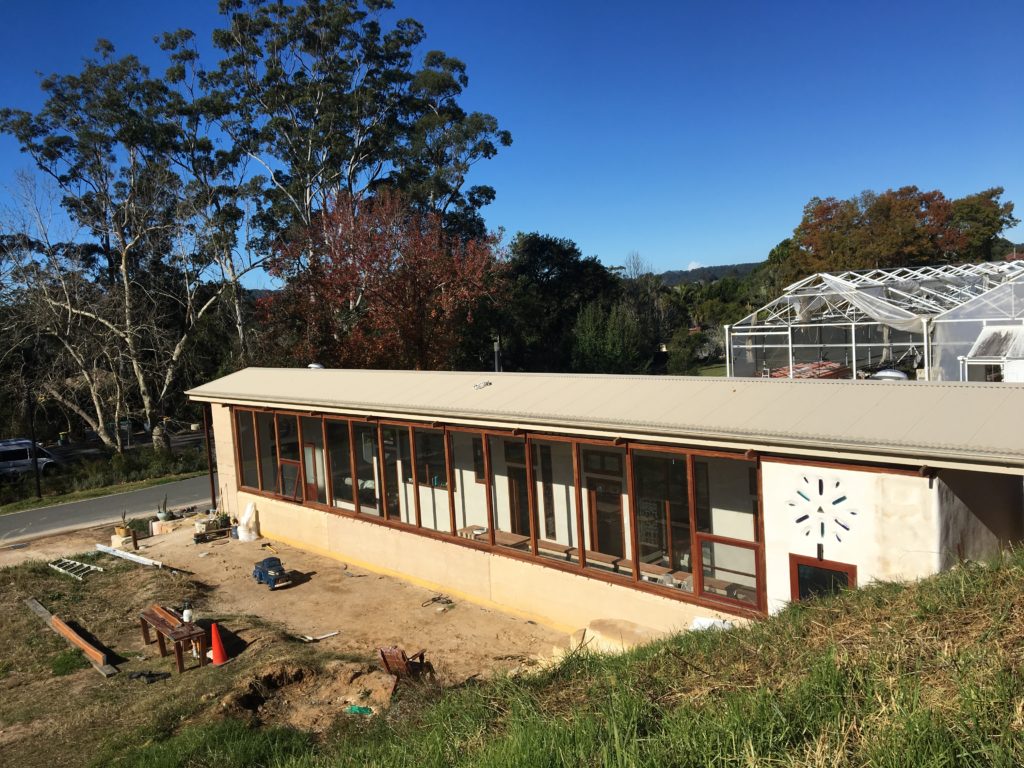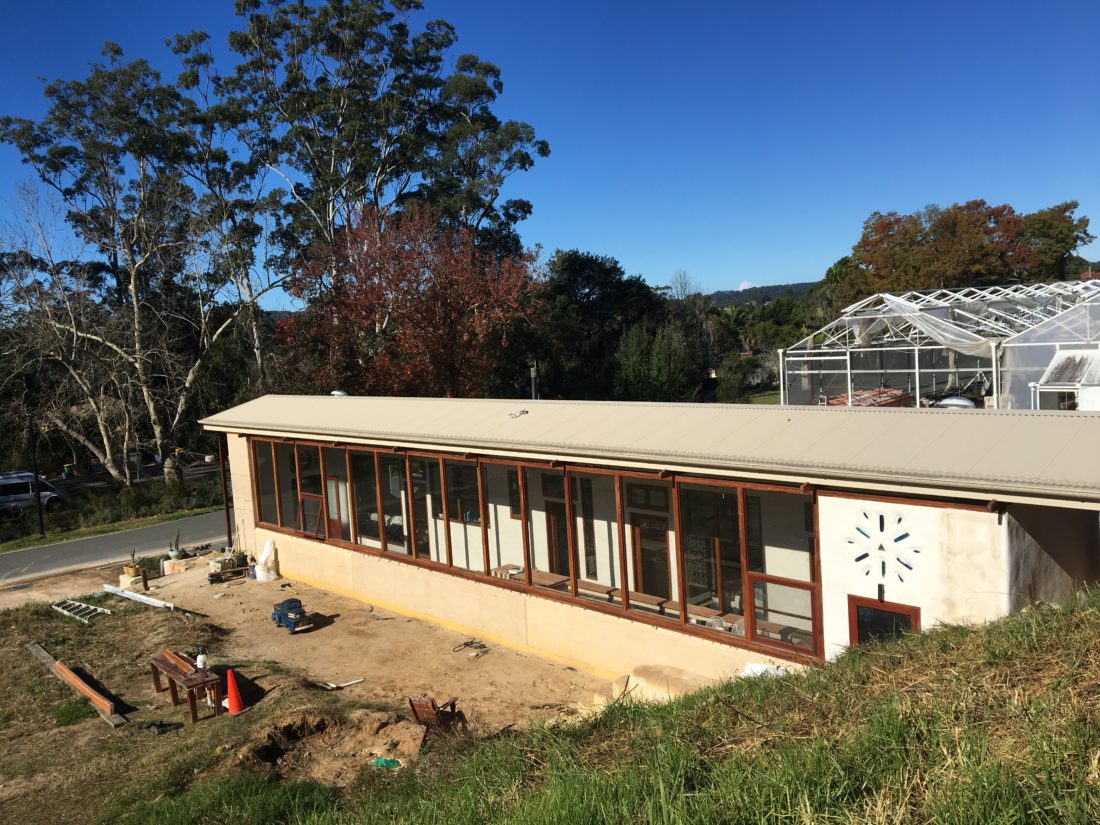
Our standards seek an outcome based on inclusive decision making, good design, good health and the well being of all community members. They encourage small and inexpensive houses knowingly designed to provide thermal comfort, low water use and low energy consumption. The standards also seek innovation from community members in the design of their homes and the use of recycled and locally sourced materials wherever possible.
The village has established a set of design benchmarks, which are monitored through a design review process, and which must be achieved before plans can be submitted to council for DA approval.
The minimum standards are
- A building thermal performance rating – NatHERS 7 stars
- Efficient water use measured by the NSW BASIX tool our standard is a 70% reduction in potable water usage
- Sufficient solar photovoltaic panels to exceed annual average power consumption. Our guideline is 2kW for the first bedroom and 1kW for each additional bedroom.
- Owners must achieve an additional benchmark using a score-sheet developed by Narara Ecovillage which incorporates many options including:
- Reducing embodied energy in construction materials.
- Using sustainable materials such as mud-brick, hempcrete and straw bales.
- Avoiding materials with high human health impacts such as VOC paints.
- Using high efficiency energy rated appliances such as washing machines/dryers or committing to not having them at all.
- Managing energy consumption to match energy production.
- Managing waste both during construction and ongoing through the use of recycling and composting.
- Managing the indoor environmental quality of building, including air quality, cross ventilation, lighting, thermal conditions, pollutants and ergonomics.
- Liveability considerations such as designing for disability access.
Finally, all owners are also required to obtain formal consent from their surrounding neighbours before submitting their design for village approval.

